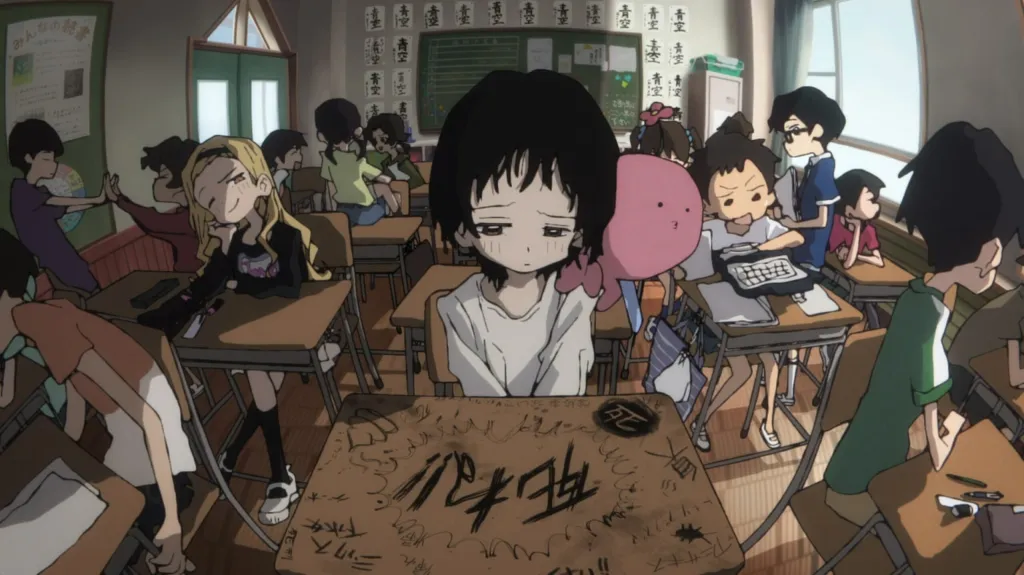
By Jonathan Ramirez
Joaquin Phoenix and Todd Philips’s “Joker” beautifully reinvents the iconic villain across cinema and comics in an unsettling and slow burning hero’s journey through the antagonist himself.
The central theme behind this movie is loosely borrowed from the theme in the graphic novel “The Killing Joke” by Alan Moore which tells the story of an unsuccessful comedian living in poverty who eventually descends into madness and becomes the Joker after having “one bad day.”
But other than that, “Joker” confidently stands alone as a unique yet deliberate character driven movie on the making of the Clown Prince himself.
The movie starts in a clown agency where we meet Arthur, a sad looking clown, as he sits in front of his vanity backstage mirror with the lights on and stares blankly at himself. Suddenly, he hooks the corners of his mouth up to forcibly smile into a deep grin and holds it as a tear starts to roll down his painted face unnoticed.
This Joker origin movie steps away from the traditional capes and crusade fantasy of comic book movies and opens with a brilliant portrait into a man’s will to create smiles, but with an inability to hold his own.
The story takes place in Gotham City in 1981 and the income inequality between the rich and the poor is widening. People are taking to the streets on garbage strikes as trash is piled high and caked with rats scurrying frantically around. Thomas Wayne is running for mayor with a promise to clean the city while serving as the symbol for the neglectful rich capitalists in a dirty and crime infested city.
The cinematography feels so perfect during these scenes that it seems like the camera is almost a character entirely on it’s own. A low angle shot up a long staircase outside show a gloomy Arthur slowly climbing up the stairs and is shot magnificently. Another scene shows Arthur miserably looking out a bus window, but the significance of these scenes are when they are reprised and revamped in a state of joy and maniacal happiness as Arthur starts to complete his descension.
Arthur lives in a badly maintained rundown apartment and is the caretaker of his mother, Penny. He spend late nights watching late night show host Murray Franklin, played by Robert De Niro, with her. Murray Franklin is supposed to be the hero that inspires Arthur to pursue stand up comedy.
Arthur has a debilitating disease that makes him laugh uncontrollably in spontaneous bursts even though it does not match his emotions. His laughs make others uncomfortable and confused, Arthur would then hand them a card explaining his condition. There is a deep searing pain in his eyes through the unwilling laughter that leaves you feeling stunned with empathy.
Aside from having a condition that further thwarts his chances of achieving his dreams, he is not really funny in the first place. He attends a local open mic night and ultimately fails after his condition ruins the delivery of his badly written jokes.
.Which ends up getting the attention of his hero Murray Franklin, and leads to Arthur being invited on the show to be made fun of.
This leads to the continued pattern of bullying and social alienation and slow death of Arthur Fleck, reconstructing his entire psyche and finally cascades into the clown prince of crime.
What we get from Phoenix’s raw and ferocious performance is a Joker so far removed from every other portrayal that it would be rendered pointless to compare it to Heath Ledger’s or Jack Nicholson’s take on the infamous psychopath.
After Arthur loses his job at the clown agency, Arthur boards a subway only to end up shooting and killing three Wall Street bankers who are harassing a young woman on the subway. He accidentally reinvigorates the resistance movement between the poor and the rich, creating an anarchic playground.
People in the city would later don the mask that resembled his clown makeup. For the first time, Arthur feels a sense of belonging and a purpose amid the chaos.
Arthur reaches the peak of his insanity after finding out his mother adopted him and allowed her ex boyfriend to abuse them both. This results in Arthur smothering his mother in the hospital, marking the end of his transformation.
Now fully reborn, Arthur attends the late night show and fully embraces the political message his presence brings by having the show refer to him as “Joker” for the first time. In a long winded monologue, Arthur confesses to the subways killings and tells the live television audience how society abandons the lonely and helpless just before shooting him.
The same scenes mentioned earlier of Arthur walking up the stairs and sadly looking out the bus window towards the end of the movie are no longer painted with frailty and despair. Instead, we see Arthur in full make up dancing down the stairs and the ending scene of his big excited smile as he laughs and looks out the window at the madness and destruction he created in the back of a police car.
“Joker” can leave you uncomfortably shocked, but the level of depth into a character from the mind of Philips and the hypnotizing performance of Phoenix will absolutely make you put on a happy face.











